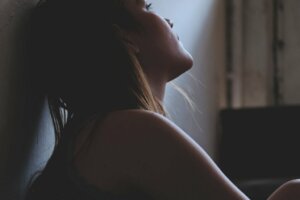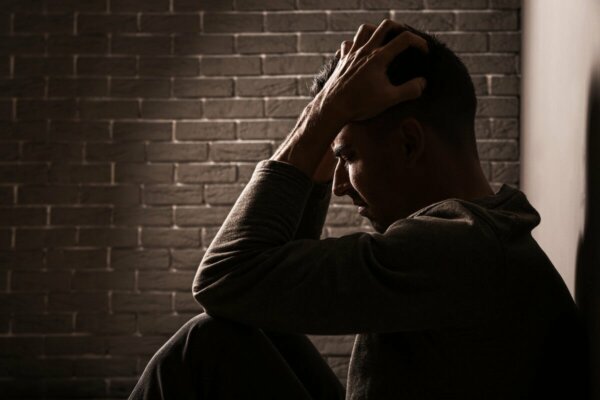Vital Anxiety - History, Definition, Differences, and Treatment

Did you know that a Spanish psychiatrist was the first to describe vital anxiety in his 1950 book? Anxiety is a normal and often healthy emotion. However, when a person regularly feels disproportionate levels of anxiety, it might become a medical disorder. Anxiety disorders form a category of mental health diagnoses that lead to fear, apprehension, and worry.
These disorders alter how a person processes emotions and behave, also causing physical symptoms. Mild anxiety might be vague and unsettling, while severe anxiety may seriously affect day-to-day life. Being the most common group of mental illnesses in the country, anxiety disorders affect 40 million people in America. However, only 36.9 percent of people with an anxiety disorder receive treatment.
The American Psychological Association defines anxiety as an emotion characterized by feelings of tension and worried thoughts. Likewise, vital anxiety also includes physical changes like increased blood pressure. Knowing the difference between normal feelings of anxiety and an anxiety disorder requiring medical attention is vital.
For example, knowing this can truly help a person identify and treat the condition. In this article, we’ll look at the history, definition, types, and differences. Additionally, we’ll discuss the available treatment options.
“If I take death into my life, acknowledge it, and face it squarely. I’ll free myself from the anxiety of death and the pettiness of life. And only then will I be free to become myself.”
-Martin Heidegger-
Brief history and definition
In 1950, Spanish psychiatrist Juan José López-Ibor described a nosological entity called anxious thymopathy. Its origin was the observation of recoveries of neurotic patients during psychotherapy that weren’t related to the psychodynamic process. In fact, he suspected such a spontaneous fading of neurotic anxiety to be of an endogenous character.
So, this led to vital anxiety, a mood disturbance similar to Schneider’s vital sadness in endogenous depressions. Both normal and pathological, people considered vital anxiety different, having a biological origin. Therefore, biological treatment was applied to it. In time, López concluded that anxious thymopathy wasn’t an independent nosological entity.
Instead, it’s a vital entity or endothymic. Anxiety was an element present in all forms of neurotic disorders integrated with personality and biographical factors. This wonderful research also led to the concept of neuroses as mood disorders. Believe it or not, today, people study anxiety disorders following the criteria López originated in his book The Vital Anxiety.
Anxiety is a pretty ambiguous word. Not only does it describe a clinical symptom, but also a disorder or a group of disorders (anxiety disorder). Besides, anxiety relates to our intimate relationship with ceasing to exist, nothingness, and human limits. The problem of anxiety is intimately related to hope. After all, there’s no human or psychological situation worse than despair.
Plus, knowing the meaning of anguish and anxiety helps understand mankind. From a phenomenological perspective, vital anxiety is a vital feeling. It has the same characteristics as other vital feelings, including well-being, discomfort, or vertigo. Most importantly, they’re feeling that express our way of “being in the world”.

Types
First of all, DSM-V classifies anxiety disorders into several main types. In the past, the Diagnostic and Statistical Manual of Mental Health Disorders included OCD. But anxiety disorders now include the following diagnoses:
- Generalized anxiety disorder. This is a chronic disorder involving excessive anxiety and worries. For example, anxiety about life events, objects, and situations. GAD is the most common anxiety disorder in the world.
- Panic disorder. Brief or sudden attacks of intense terror and apprehension characterize panic disorder. Panic attacks tend to occur and escalate rapidly, peaking after 10 minutes. However, a panic attack might last for hours.
- Specific phobia. It’s an irrational fear and avoidance of a particular object or situation. Phobias aren’t like other anxiety disorders, as they relate to a specific cause. Most importantly, a phobic person acknowledges a fear as illogical but can’t control their anxiety.
- Agoraphobia. It refers to a fear of places, events, or situations from which it’s difficult to escape. Additionally, help wouldn’t be available if a person is trapped. People often misunderstand this condition as a phobia of open spaces.
- Selective mutism. First, some children experience this form of anxiety, in which they can’t speak. In other words, they can’t speak in some places or contexts, such as school, even though they may have excellent communication skills around familiar people.
- Social phobia. It’s a fear of negative judgment from others in social situations or of public embarrassment. Social phobia includes a range of feelings, like stage fright, and a fear of intimacy. Plus, anxiety around humiliation and rejection.
- Separation anxiety disorder. High levels of anxiety after separation from a person or place offering feelings of security or safety characterize this disorder. Most importantly, separation sometimes results in panic symptoms.
When does vital anxiety need treatment?
Anxiety can often cause a lot of worry and distress. Nevertheless, it isn’t always a medical condition.
Anxiety
When an individual faces potentially harmful or worrying triggers, feelings of anxiety aren’t only normal but necessary for survival. Since the earliest days of humanity, the approach of predators and incoming danger sets off alarms in the body and allows evasive action. These alarms become noticeable in the form of a fast heartbeat, sweating, and increased sensitivity to surroundings.
Likewise, this danger causes a rush of adrenaline, a hormone and chemical messenger in the brain. This important hormone triggers these anxious reactions in a process called the “fight-or-flight” response. Most importantly, this prepares humans to physically confront or flee any potential threats to safety.
For many people, running from larger animals and imminent danger is a less pressing concern than it was in the past. Anxieties now revolve around work, money, family life, and health. But other crucial issues demand a person’s attention without necessarily requiring the ‘fight-or-flight’ reaction.
The nervous feeling before an important life event or during a difficult situation is a natural echo of the original ‘fight-or-flight’ reaction. It can still be essential to survival. For example, anxiety about being hit by a car when crossing the street means that a person will instinctively look both ways, avoiding danger.
Anxiety disorders
Firstly, the duration or severity of an anxious feeling can sometimes be disproportionate to the original trigger. Physical symptoms like increased blood pressure and nausea also develop. Likewise, these responses move beyond anxiety into an anxiety disorder.
The APA describes a person with anxiety disorder as having recurring intrusive thoughts or concerns. Unfortunately, after vital anxiety reaches the stage of a disorder, it can utterly interfere with daily function.
Treatment
Vital anxiety treatments consist of a combination of psychotherapy, behavioral therapy, and medication. Alcohol dependence, depression, or other conditions can sometimes have such a strong effect on mental well-being. Therefore, treating an anxiety disorder must wait until any underlying conditions are under control.
Often, a person can treat an anxiety disorder at home without clinical supervision. However, this isn’t effective for severe ones. There are several exercises to help people cope with milder anxiety disorders. These include:
- Stress management. Learning to manage stress helps limit potential triggers. Thus, consider organizing any upcoming pressures and deadlines. Make lists to make daunting tasks more manageable, and commit to them.
- Relaxation techniques. Simple activities help relieve mental and physical signs of anxiety. These include meditation, breathing exercises, long baths, resting in the dark, and yoga.
- Exercises to replace negative thoughts. Make a list of the negative thoughts that cycle due to anxiety. And make another list with positive ones. This mental image of successfully facing fear is beneficial.
- Support network. Talk with familiar people who’re supportive, like a family member or friend. Find support groups online.
- Exercise. Physical exertion can improve self-image and release chemicals in the brain that trigger positive feelings.
- Counseling. A standard way of treating anxiety is psychological counseling. This includes cognitive-behavioral therapy, psychotherapy, or a combination of both.
- Medications. You can manage anxiety with several types of medication. Medicines that control physical and mental symptoms include antidepressants and tricyclic drugs.
Are you suffering from vital anxiety? An active lifestyle with a balanced diet helps keep anxious emotions within healthy limits. Above all, anxiety is a natural emotion that’s vital for survival.
All cited sources were thoroughly reviewed by our team to ensure their quality, reliability, currency, and validity. The bibliography of this article was considered reliable and of academic or scientific accuracy.
- Caballo (2002). Manual para el tratamiento cognitivo-conductual de los trastornos psicológicos. Vol. 1 y 2. Madrid: Siglo XXI.
- Gonzalo, L. M. (1998). Raíces de la angustia vital. Revista de Medicina de la Universidad de Navarra, 46-48.
- Hayes, S. C. (2015). Terapia de aceptación y compromiso. Desclée De Brouwer.
This text is provided for informational purposes only and does not replace consultation with a professional. If in doubt, consult your specialist.








